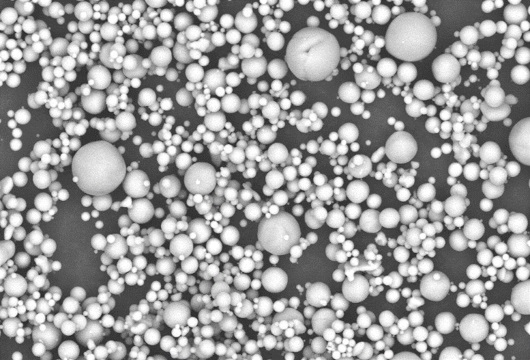Spherical Alumina Filler Market Overview

Because spherical alumina powder has good thermal conductivity and excellent cost performance, it is a thermally conductive filler used in large quantities and with a high proportion of thermal interface materials on the market.
The morphology of spherical alumina shows a regular spherical structure, and the particle size is usually in the range of a few microns to dozens of dimensions. It is mainly prepared through liquid phase precipitation, high-temperature plasma, spray pyrolysis and other routes.
When spherical alumina is used as a filler, the higher the sphericity of the particles, the smaller the surface energy and the better the surface fluidity. It can be more uniformly mixed with the polymer matrix, and the mixed system has better fluidity. After film formation, The prepared composite material has better uniformity.
High energy-consuming fields such as new energy vehicles and 5G promote the application of spherical alumina in the field of thermal management. The demand for spherical alumina increases and the market continues to expand. In addition to being a thermal conductive material, spherical alumina is also widely used in advanced ceramics, catalysis, grinding and polishing, composite materials, etc., and has broad market prospects.
According to QYResearch statistics, the global spherical alumina filler market size will be approximately US$398 million in 2023, and is expected to reach US$68.5 billion in 2029, with a CAGR of 9.5% in the next few years.
Globally, major manufacturers of spherical alumina fillers include Denka Co., Ltd., Baitu High-tech, Yaduma, Showa Denko, Nippon Steel & Sumitomo Metal, Sibelco, Tianjin Zexi Minerals, Lianrui New Materials, Daehan Ceramics, One Shitong, Kaisheng Technology, Dongkuk R&S, Yixin Mining Technology and Suzhou Jinyi New Materials, etc.
Currently, global core manufacturers are mainly located in Japan, South Korea and China. In terms of output value, Japan and China account for more than 80% of the market share. From 2018 to 2021, Japan is the main producing area, with an average share of 50%. By 2023, China’s output value share will exceed 45%. In the next few years, China will occupy the main market share.
In terms of product types, 30-80μm is currently the most important segmented product, accounting for approximately 46% of the market share.
In terms of product type, thermal interface materials TIM is currently the main source of demand, accounting for approximately 49%. When used as thermal interface materials, spherical aluminum fillers can be used in thermal pads, thermal grease, thermal potting glue, thermal gel, etc.
At present, the terminal applications driving demand for spherical alumina are mainly photovoltaic cells, new energy vehicle power batteries, 5G communications/high-end electronic products, chip packaging, etc. At the same time, the future development trend of spherical alumina is mainly high purity and low radioactivity.
